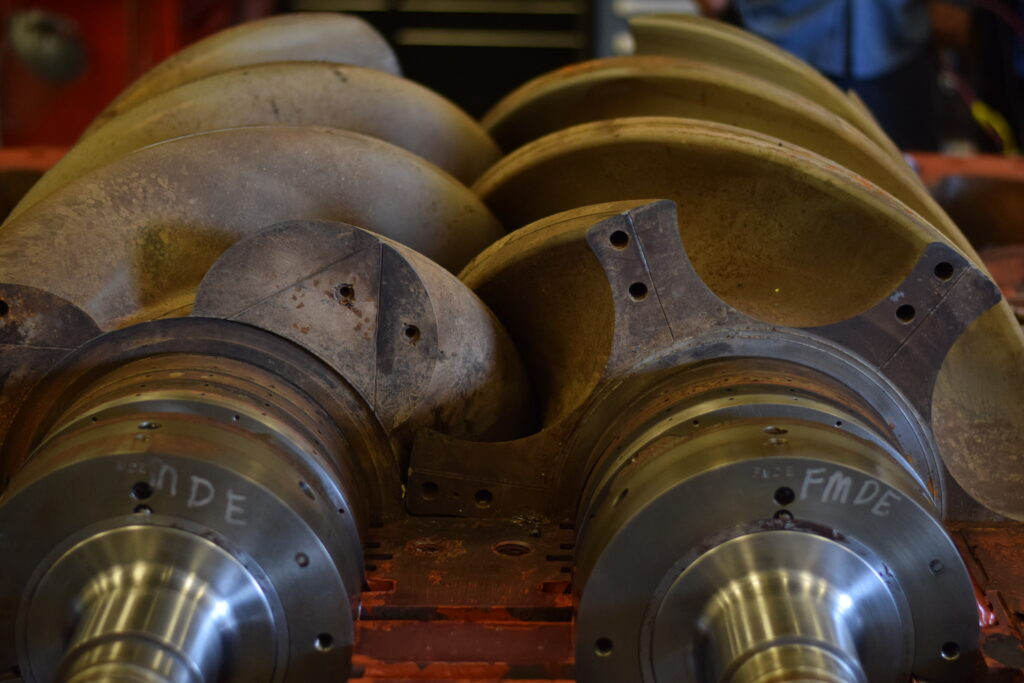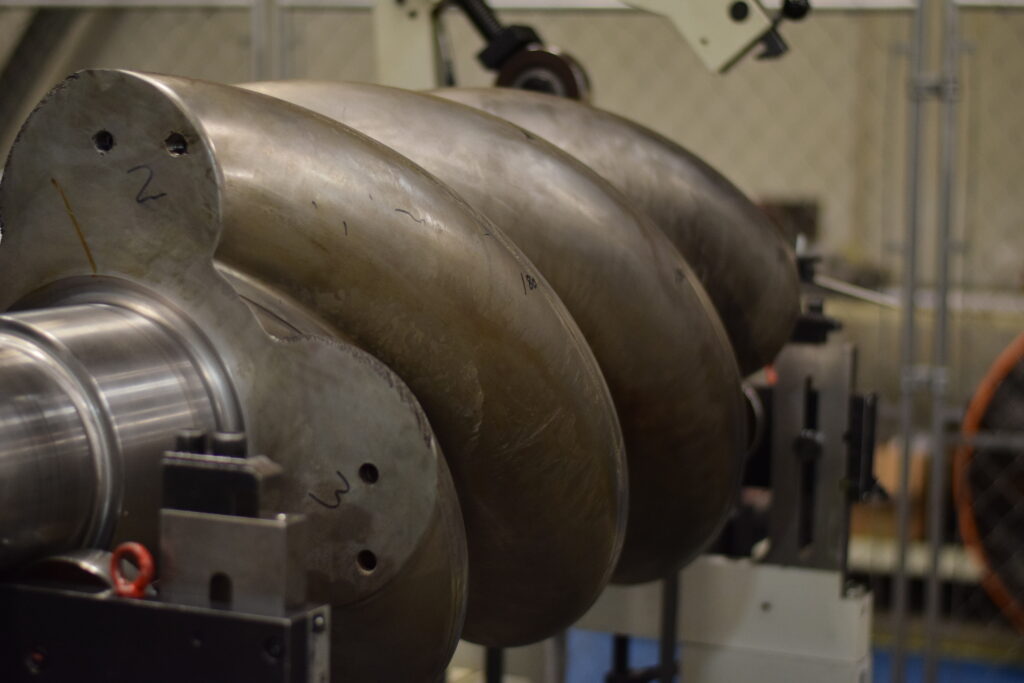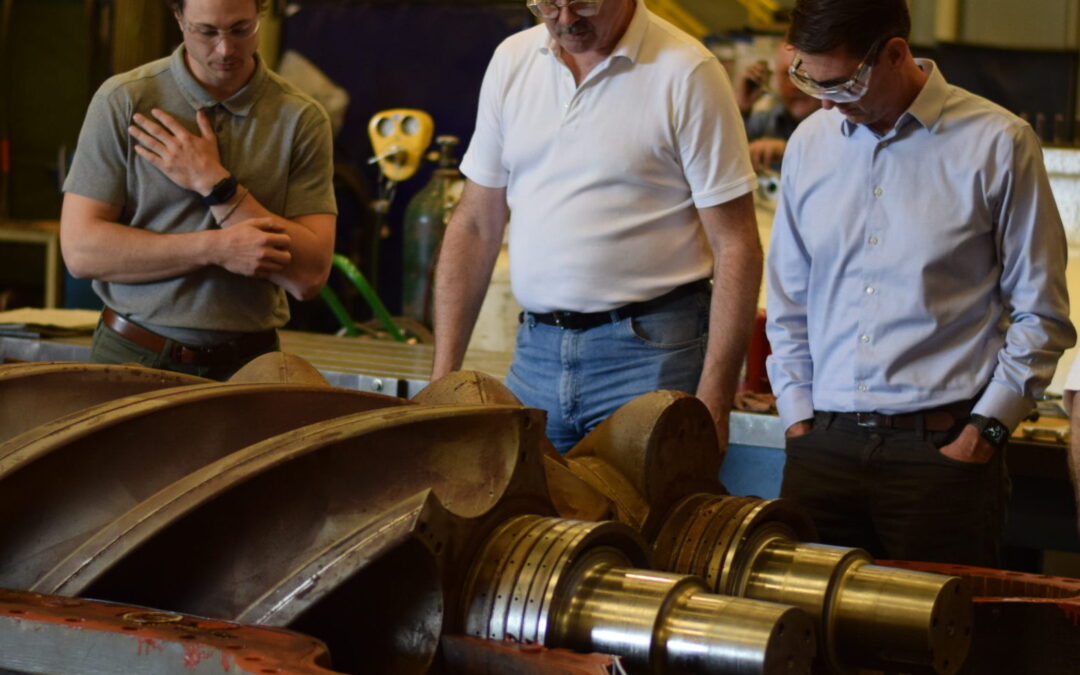A petrochemical customer experienced a bearing failure in their Dresser-Rand Axi 630HS165 Oil Free Screw. The customer contacted RMS to discover and address the root cause of this failure and repair their oil free screw compressor with goal of promptly to restoring full plant output. RMS received and inspected this Dresser-Rand Axi 630HS165 Oil Free Screw to identify the root cause of the failure and complete the required repairs to restore the customer’s plant capacity.
Upon arrival at RMS’s Bethlehem, PA shop, the Dresser-Rand Axi 630HS165 was cleaned inspected, and disassembled by the RMS shop team with full documentation of assembled clearances. Backed by onsite engineering support, the RMS team worked to find the source of the failure. RMS team provided the customer with daily updates on inspection findings to keep the customer site informed on the condition of this critical piece of rotating machinery.

The full inspection revealed several repair opportunities. The RMS team identified a water leak at the split line seal between the cooling water connection between the upper and lower halves as the main cause of the failure. Water entered the lube oils system, which negatively affected the oil’s ability to properly lubricate the bearings causing the steam turbine to trip leading to a plant shutdown. At the split line, RMS identified, Corrosion at the O-ring location, a Teflon ring with no backing support, corrosion on mating seal surface on the upper half joint face, and Oxidation path on horizontal joint clearly showed the leak path to discharge end oil drain.
The flatness of each casing half was inspected by placing a precision straight edge across the joint and measuring gaps along with the casing. These points were then mapped to ensure the joint was flat across both casing halves.
With the inspection work completed, the RMS team got to work on the repairs required to get this Dresser-Rand Axi 630HS165 Oil Free Screw Compressor back into service. First, the O-Ring joint was opened up so the RMS team could create a counter-bore for (4) steel disks to be inserted into both upper and lower half casings. The Steel disks were inserted into the counter-bore in the casing halves and seal welded into place. The lower half disks were machined flush with horizontal joint and the O-Ring groove was machined into the lower half disks. Finally, the upper half casing was recut to eliminate corrosion to the seal surfaces around the O-ring seat.

The support areas between the bearing and seal fit on each end of the machine were welded and the upper and lower casing horizontal joint surfaces were milled to remove high spots. Rotor bearing journals were ground to remove any damage from lube oil contamination and new bearings were manufactured to meet the original bearing clearance specification.
After all repair work was completed, RMS Hydro tested the water jacket to verify the horizontal joint repair, with newly inserted disks to contain the O-rings, passed the required specifications. With a successful hydro test completed, RMS got work assembling the compressor.
The reworked rotors were assembly balanced at the RMS shop before being placed into the repaired casing. Compressor assembly was completed with rotor timing clearance set and instrument installation confirmed. After a final check, the rotor was shipped back to the customer to bring their plant back up to full running capacity.
This critical project was managed with daily updates on the inspection results and repair progress, with an updated Gantt chart to follow the progression of the project daily. Reports of the inspection and final repair were prepared to document the findings. The customer was also engaged in the decisions that would impact the schedule to ensure timely delivery of their machine back into production.

